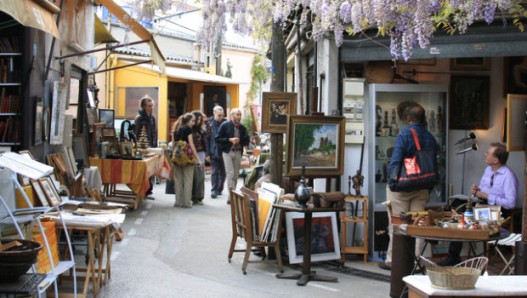Why do we call that kind of open-air market, where we can buy goods of little value, sometimes even barter, flea market? Because it was easier to find fleas in carpets and clothes bought in the flea market, that really is a bargain, at least when this kind of markets began to spread to Paris.
The oldest and most famous flea market in Paris, which attracts annually more than 11 million visitors, is the Saint-Ouen flea market, although technically Saint-Ouen is not Paris, but a town administratively autonomous, just outside the old city gates.
The market is officially on the square since 1885, when settled the first rag pickers, where new orders of the prefect of Paris on hygiene, had deprived them of their raw material: waste of Paris. Just to give an idea of the popularity of this market, merchants have to rent out their “positions” for a minimum period of three years (but there are those who rent them for 9!); almost a must for the largest flea market in Europe.
Of course today the market has changed, and the sanitary problem of the nineteenth century was only the name. Many of the merchants that are located between these pathways, clothing aside, offering products ranging from archeology to modern art, from classical to design; and in some cases, especially for the furniture and furnishings, it is not just cheap pieces.
Coming from the metro, first encountered the usual stalls offering clothing and products for a good-market, often by local real-fake; better move on (so much for these stalls you must go back and get up to the lanes around rue des Rosiers. Here we flock to antique shops, those postcards, where you can find everything; from precious pieces, to pieces a few euros, only for our favorite hobby (the area is well marked by signs-map).
Fans programming an entire day at the market, where business will make the early morning, for everyone else is a must take into account a half day. The Saint-Ouen flea market is held every Saturday, Sunday and Monday and can be reached with a walk of 10 minutes walking, after that it’s down to the station Porte de Clignancourt, terminus of the line 4 of the Paris metro.

